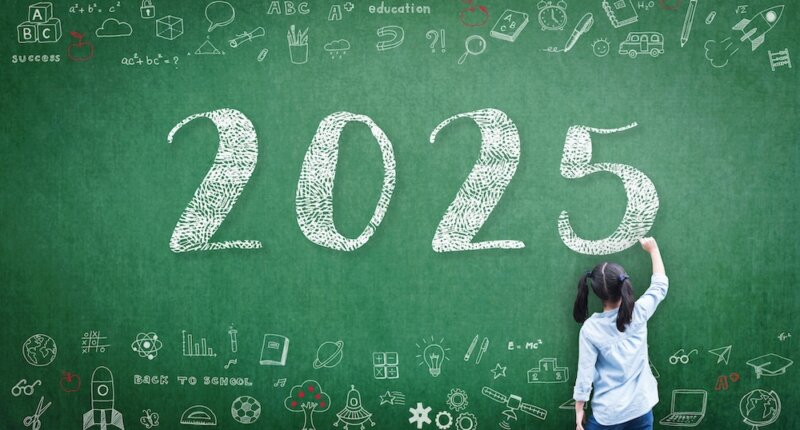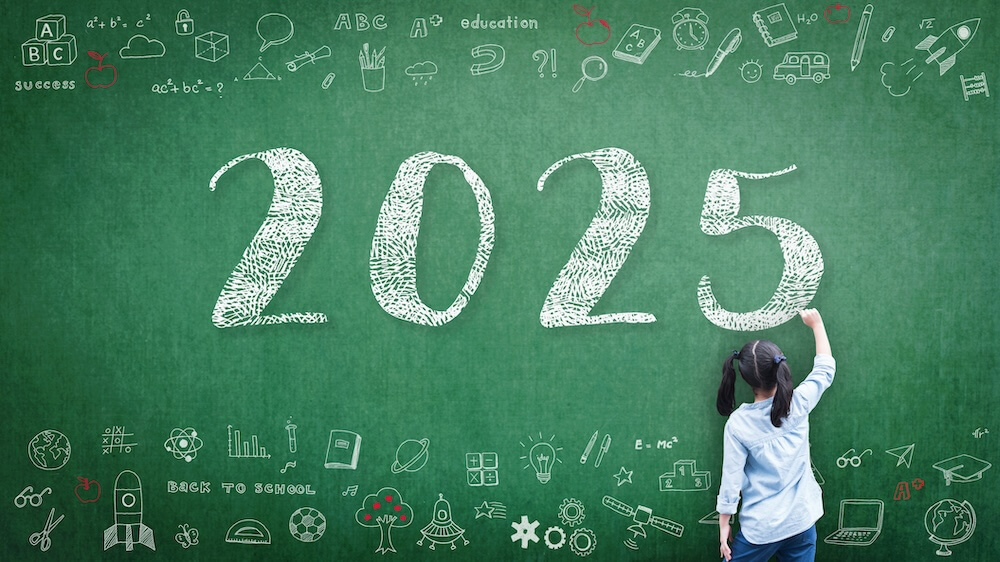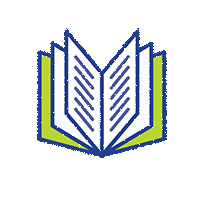It’s the second half of the school year with our multilingual learners! Let’s kick it off with some fun!
It’s that time of the year again. The holidays are over, the food has been eaten, travels have simmered, and the days are beginning to grow a little longer – and it’s time to head back to the classroom.
As much as we don’t always admit it, we can all be sluggish when restarting the new year after a well-deserved holiday break. Returning to school – even after being away for a short time – can be challenging for teachers and students.
Multilingual students, especially, can face several unique challenges upon returning to school.
In this article, I’ll discuss some challenges multilingual students face after winter break. Next, I’ll share some engaging New Year’s activities that you can use to help garner interest and engagement after a break from the school routine.
Multilingual Learner Challenges
Multilingual students face unique challenges that can make returning to school more difficult than native English speakers. These challenges can span linguistic, cultural, social, and educational spheres.
Here are some key obstacles multilingual students can encounter upon returning to school after winter break:
- Language Barriers
- Multilingual students might struggle more with English after a break, especially if they didn’t practice speaking or writing in English over the holiday. This gap in time can make academic discussions harder and catching up more challenging.
- Cultural Readjustment
- Returning to school means adapting again to different cultural norms, behaviors, and educational systems – which can differ from home.
- Academic Pressure
- The pressure to catch up quickly can be intense for multilingual students, particularly in subjects like history or science, where academic language can complicate understanding.
- Social Isolation
- After holidays with family, students might feel lonely at school if they’re among few multilingual peers, which can impact their social and academic engagement upon returning.
- Time Management
- Returning to a school routine can be challenging after a break, making it hard to balance school with other responsibilities.
- Motivation and Confidence
- Students might feel less motivated or confident in class if they think they’ve fallen behind, especially without English practice during the break.
These challenges highlight the need for teachers to have a good toolbox of supportive strategies upon returning to school.

Make School Engaging for Your Multilingual Students Upon Return
Even with our many challenges, this time of year can benefit you and your students.
Since students have spent time with their families during the holiday season, you and your student peers can learn more about each other through conversations about cultural backgrounds, traditions, holidays, and life experiences. You can also use this new information you’ve learned about your students to help tailor lessons in the future.
Another way to motivate students is to share exciting news before they leave for winter break. By discussing exciting plans, projects, and initiatives before they run out the door, you can encourage a positive comeback so they have something to look forward to upon returning.
Every lesson plan is a new opportunity, and every student interaction is a chance to inspire.
Here are 6 New Year’s activities for Multilingual Students – You can use these activities yearly, as they are evergreen lessons.
1. New Year’s Video
Before school gets out for winter break, or even after the holidays – an introductory educational New Year’s video with images, sounds, music, live talk, and applicable content can help multilingual students understand how we celebrate the New Year in America and also around the world. Learning basic information about the New Year can also lead to a host of further activities highlighting different cultures, food, traditions, and celebrations. This is a great way to start a basic conversation that can lead to various different personalized learning plans and projects.
For beginners, watching simple videos is especially good for students grasping English. You can use videos for projects, conversation starters, vocabulary building blocks, games, and more.
Here is a straightforward video about the topic: New Year’s Eve Facts for Kids
2. Write a Letter to 2025 About Yourself – This activity can be modified for each student by English level.
Activity: What kind of things do you want to accomplish? Reflect on your current life, set personal goals, and capture your aspirations for the future.
Here is a layout of how you can teach this fun lesson:
- Introduction – Think about your life now: your interests, challenges, friends, and dreams. Consider what you hope to achieve or change by the end of 2025.
- Proper Letter Setup – Write the date at the top of your paper: January 8, 2025. This activity will make it feel like you’re writing from the future.
- Writing the Letter – Greeting: Start with “Dear Future Me,” or use a personal nickname or term of endearment.
- Describe who you are right now.
- Mention what you love doing, your favorite subjects or activities, and any current struggles or successes.
- Future Hopes and Predictions (Paragraph 2): Write about where you imagine yourself at the end of 2025.
- What changes do you hope to see in your life, school, or personal growth?
- What goals do you want to set for yourself by the end of the year? These goals could be academic, personal, or social.
- Advice or Wishes (Paragraph 3):
- Give yourself advice based on what you know now.
- What do you wish for your future self?
- Consider including a reminder of something important to you now.
- Closing:
- End with a closing like “Yours truly,” “With love,” or something more creative.
- Sign your name.
- Review: Read over your letter. Make any corrections or additions you feel are necessary. Remember, this is a private letter to you from you, so be as open and honest as possible.
- Sealing the Letter:
- If you have an envelope, seal your letter inside. On the front, write “To be opened at the end of 2025.”
- If not, fold your letter securely and place it in a designated safe spot.
- Storage:
- Hand in your letter to your teacher or place it in a class time capsule. If you are at home, find a secure spot where it won’t be disturbed until 2025.
- Reflection:
- Consider how this letter might influence your decisions or actions in the coming year. What did you learn about yourself through this process?
- Follow-Up:
- Mark your calendar or set a reminder for the end of 2025 to open your letter.
- Discuss how this experience might affect your future actions or planning with your teacher or class.
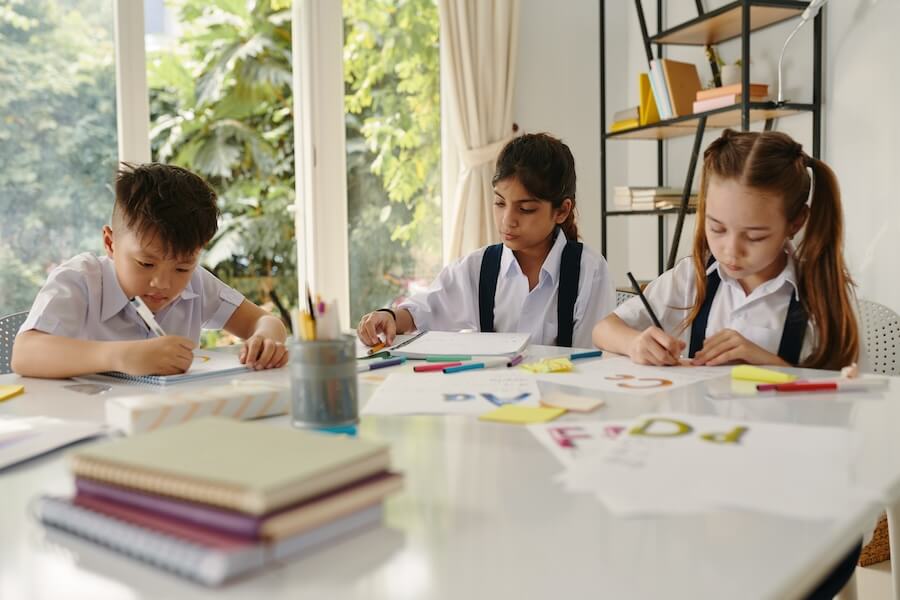
3. Write a Six Word Memoir!
A six-word memoir is a concise autobiography in which the author summarizes significant aspects of their lives in just six words. Although this can be a profound exercise in self-reflection, you can use this strategy to keep things simple for new English language learners.
Larry Smith popularized the six-word memoir concept through the “Six-Word Memoirs” project in SMITH Magazine. This project challenges people to distill their experiences, philosophies, or lessons into an extremely brief format.
For new English learners, some good examples to share can include: “Slept all day, then video games,” “Went to Mexico—it was fun,” “Gym, sleep, eat, repeat. That’s it.”
Examples for higher-level English students can include “Found it, lost it, found self” or “Journeyed far, but home is heart.”
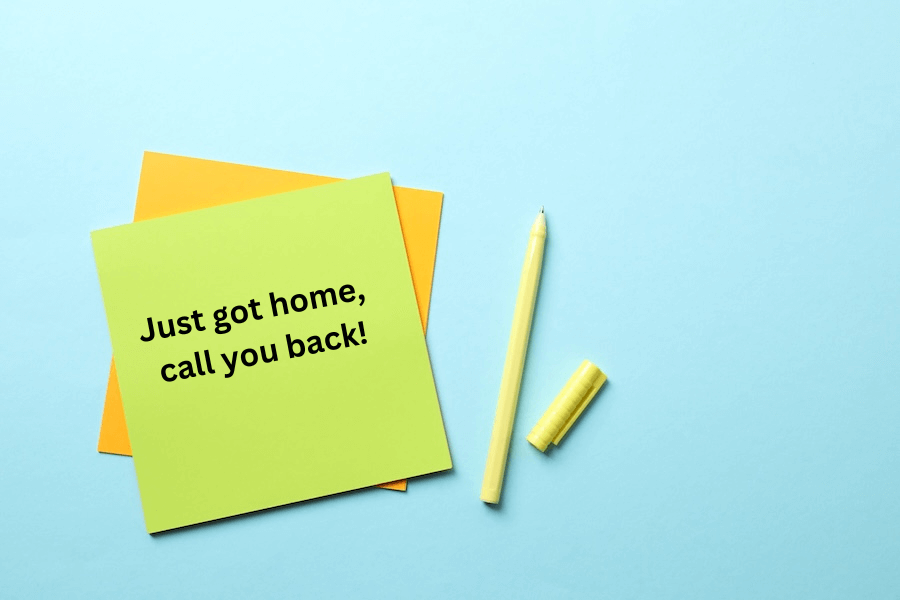
You can modify this lesson according to each student’s English level by making it longer or asking students to describe their memoirs in greater detail.
The memoirs above are often poignant, humorous, or profound and capture the essence of personal stories in a way that invites reflection and connection. You can put these memoirs on sticky notes for the class to see and discuss as the new year begins.
“These personal memoirs are a great way to get to know more about your students – they can express themselves – and learn more about their peers simultaneously.”
To learn more about Six-Word Memoirs, visit Six Word Memoirs.
4. New Year’s Resolutions Board
Have students create personal resolution boards to visually represent their goals for the new year. Encourage them to write their resolutions in English, focusing on language goals such as, “I will learn 50 new words” or “I will practice speaking English every day.” Daily practice helps with language practice and sets a positive tone for the new year.
5. Language Scavenger Hunt
Organize a scavenger hunt where clues are written in English and related to the school environment or holiday themes. Clues could be riddles or simple descriptions like “Find something red and round like New Year’s fireworks.” You can also modify this activity depending on the current themes or topics you may be teaching. It is also a good lesson for reviewing vocabulary words and concepts.

5. Cultural Exchange Presentation
Have your students prepare short presentations about how they celebrated the New Year in their home country or culture. They can describe traditions, foods, or special activities in simple English. You can use this activity in another lesson with a Q&A session in small groups.
6. Story Circle
Start a story with a New Year’s theme, then each student adds a sentence or two. The story can be silly or serious, but each contribution must be in English. Students can do this activity orally or by writing on a shared document or board. This lesson is fun and can help students break the ice upon returning to school.
The lessons we’ve explored are more than just new lesson ideas – they’re opportunities to learn more about your students, create connections in the classroom, and enhance learning English through fun lesson plans.What other ideas do you have for the new year?

